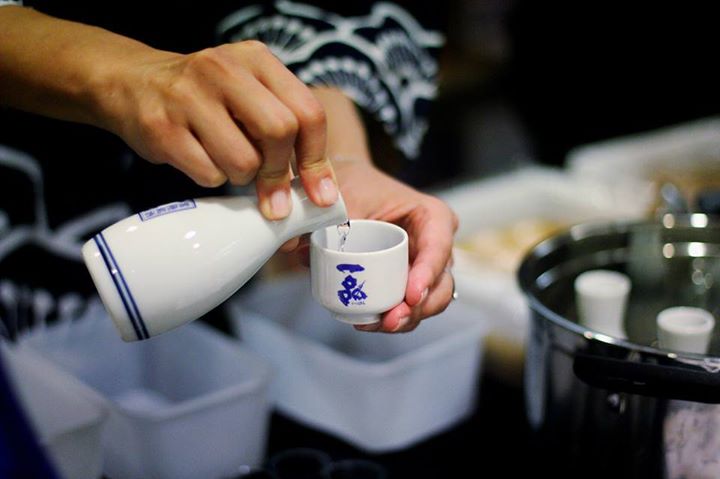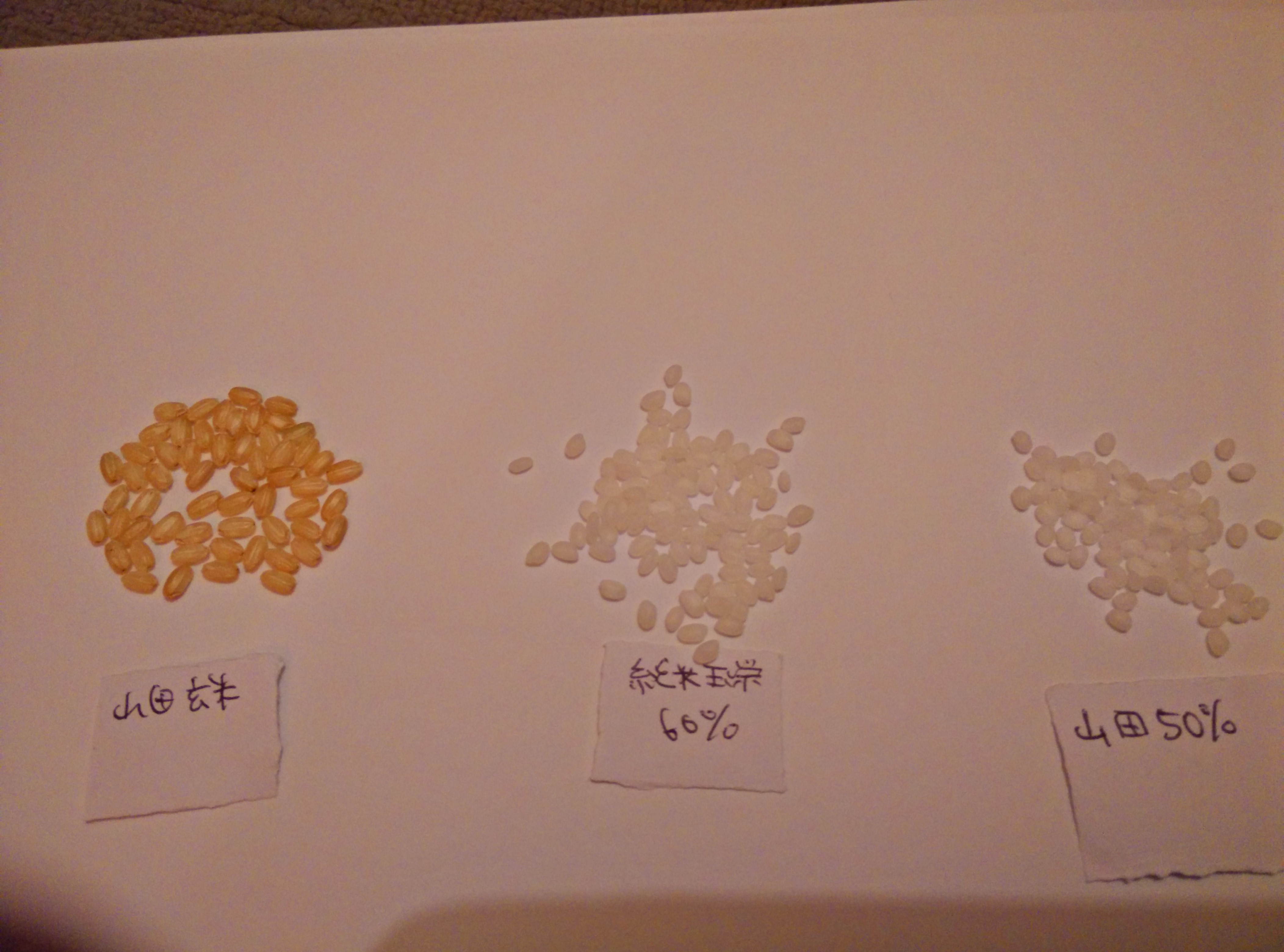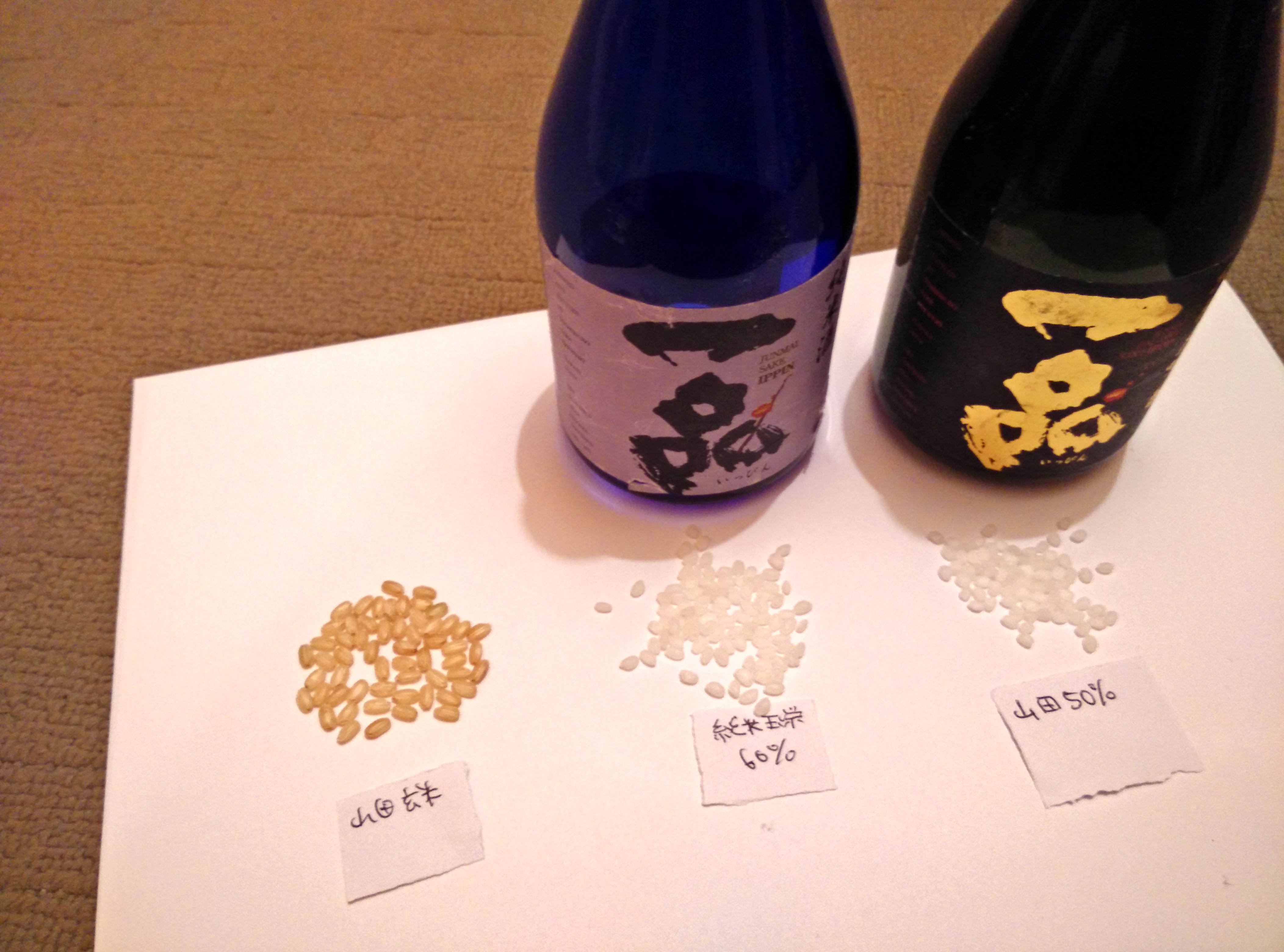
 Hi, this is Satoshi from Yoshikubo Sake brewey.
Hi, this is Satoshi from Yoshikubo Sake brewey.
Firstly, I am so excited to join the Washoku Lovers Blog as a writer!
I’ll try to contribute fresh topics about sake. I am a sake expert so I’ll do my best to teach you all about it.
If you have any questions about anything related to sake, please leave comments! 🙂
My first topic is rice polishing.
Sake is brewed from rice. Did you know that?
It’s technically within the same category as wine, but it’s a bit more tricky than grape wine.
First step is polishing the rice.
The exterior husk of brown rice needs to be polished before the rice can be brewed.
100% polish rate means the rice is still brown.
The outside of the rice is constituted of oils and roughness, which will show up in the taste if it is made into sake. So, the rice needs to be polished for delicate balances that make up the flavour of sake. Ippin Junmai has a 60% polish rate, while Ippin Junmai Daiginjo has a 50% polish rate. The rice is polished slowly, and it takes a few days.

This is one of the things that determines price – the lower the polish rate the more expensive it is.
Next time, I’ll explain the differences between traditional Junmai and Daiginjo!
Cheers!!